
13 Aug Witness the past reimagined: Envisioning the Settlement at Watery Lane
During archaeological investigations in advance of development by Redrow Homes Midlands, Headland Archaeology uncovered the remains of a small Romano-British agricultural settlement. This settlement showed at least two phases of occupation with several ditches enclosing a roundhouse, a stone-lined well and a possible granary.

Watery Lane site plan showing features inside enclosure
Finds from the site included a large collection of Roman pottery including some fine Samian ware, a type of pottery imported from Gaul (modern day France), known by its distinctive terracotta colour and glossy slip. This kind of pottery would have been the fine tableware of the household. It may have been a favourite item, or too expensive to replace as the rim appears to have been repaired during its lifetime.
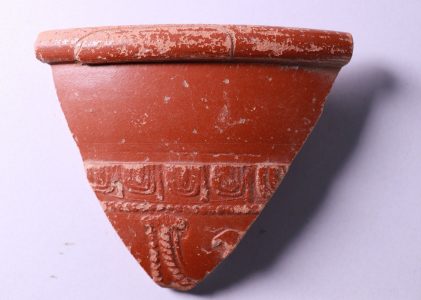
Samian Ware from Watery Lane
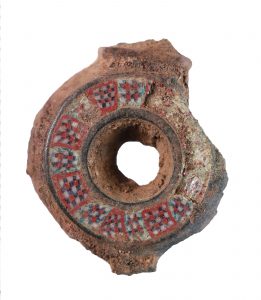
Roman copper alloy millefiori brooch
Within the well a beautiful Roman copper alloy brooch was found. This circular brooch featured an enamel inlay in a red and white millefiori pattern – a type of glasswork where coloured glass rods are fused together to create intricate patterns. This brooch may have been left in the well deliberately as a foundation offering, to ensure its success and longevity.
These finds indicate that the settlement dates from the second to third centuries AD (100 AD – 300 AD). No evidence for earlier settlement was present, suggesting that this site was first occupied in the Roman period.
In the photo below you can see the stone post-pads of the possible post-built granary structure. Further postholes in this area may have formed an earlier structure or indicate repair to a single structure. Two fragments of quern stone used for grinding grain were recovered from the nearby well, indicating possible crop processing onsite.
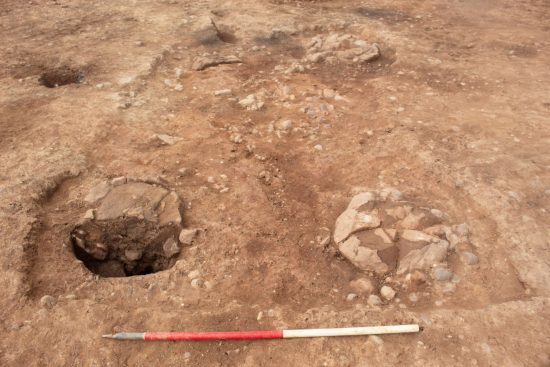
Photo of the post-pads from the post-built structure, possibly a granary
The well inside the enclosure was lined with local Helsby sandstone and was up to 2.5m deep. The stones were bonded together with clay and even some cement. One large stone was wedged tightly into the well once it had been backfilled, which may have been deliberately placed in the well to mark the abandonment and end of use of the site.
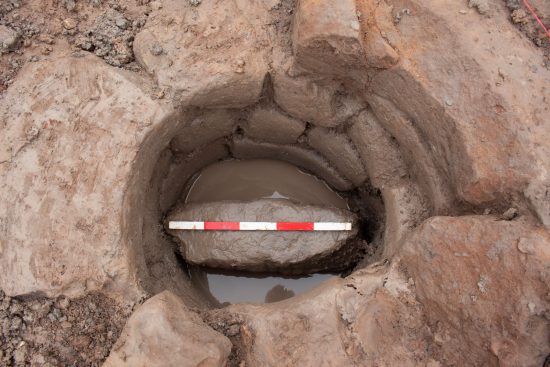
Photo of the large stone wedged into the well on site
Archaeologists often find a record of what a site was like at the end of its use, and clues to understand the changes and phases of occupation that came earlier. This site reconstruction has been created to show each of the prominent features at Watery Lane and allow us to imagine what life may have been like here during the Roman period.
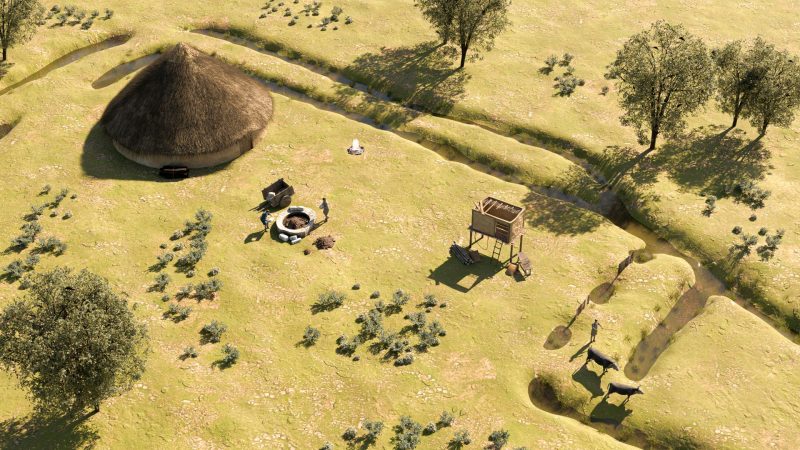
Our archaeological artist Marc’s reconstruction of the features at Watery Lane



